LUN - Mare Basalts
The members of this group are mare basalts, consisting of phenocrysts
of olivine and augite, set within a fine-grained matrix of plagioclase and
pyroxene. The accessory minerals include chromite, ilmenite, apatite,
troilite, and minor nickel-iron metal. Lunar mare basalts are much younger
than the anorthositic highland rocks. They were formed during volcanic
eruptions within large basins, mostly located on the near side of the Moon,
their shapes delineating the imaginary face of the "Man in the Moon".
Large portions of this pristine basaltic crust have been transformed into
a regolith by ongoing meteorite bombardment. Consequently, most LUN B
members are mare basalt regolith breccias, e.g., the Antarctic lunaites
Yamato 793274, Yamato 981031, and QUE 94281. Similarly, most other mare
basalts are also heavily brecciated, containing notable regolith portions.
Still, there is one unbrecciated member known - the pristine mare basalt
NWA 032, and its pairing NWA 479. The latter meteorite was recovered by
our team near Khter n'Ait Khebbach, Morocco, in November 2000, and is one
of our most unusual finds. Recent research suggests that this unique mare
basalt crystallized just 2.8 billion years ago, providing evidence for a
prolonged lunar volcanism and making this one of the youngest lunar
basalts analyzed so far.
|
NWA 2727
Lunar Olivine Gabbro/Mare basalt
Found 2005 in Morocco
TKW 191 gr
|
|
|
|
|
|
|
|
|
|
|
|
|
|
|
|
|
|
|
|
|
|
|
|
|
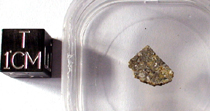 
|
|
|
|
NWA2727 -02
very nice thin slice
0.200gr
SOLD |
|
|
|
|
|
|
|
NWA2727 -07
Nice slice showing differents inclusions !
0.750 gr
SOLD
|
|
|
|
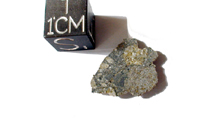  |
|
|
|
|
|
|
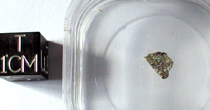 
|
|
|
|
NWA2727 -04
slice
0.078
SOLD |
|
|
|
|
|
|
|
NWA2727 -08
Nice small endcut showing differents inclusions !
0.565 gr
SOLD
|
|
|
|
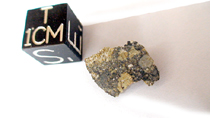 
|
|
|
|
|
|
|
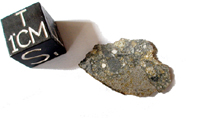 
|
|
|
|
NWA2727 -09
Nice and thin slice showing differents lithology, partialy
crusted on the edge !
0.558 gr
SOLD |
|
|
|
|
|
|
|
NWA2727 -10
Very thin slice showing differents inclusions !
0.290 gr
SOLD
|
|
|
|
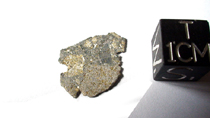  |
|
|
|
|
|
|
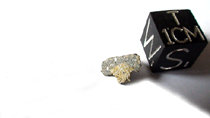 
|
|
|
|
NWA2727 -11
Tiny endcut showing nice inclusions !
0.236 gr
SOLD |
|
|
|
|
|
|
|
NWA2727 -05
sliced fragment
0.068
$120
|
|
|
|
  |
|
|
|
|
|
|
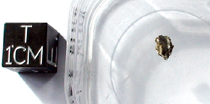 
|
|
|
|
NWA2727 -06
triangular fragment
0.056gr
$110 |
|
|
|
|
|
|
|
NWA2727 -12
Nice slice with tiny fragments !
0.108 gr
SOLD
|
|
|
|
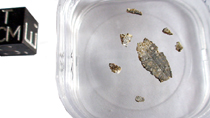 
|
|
|
|
|
|
|
|
LUN Group - Lunar Meteorites
The LUN group is a most intriguing class of achondrites since its members
represent different types of lunar rocks, i.e., genuine pieces of the Moon.
Scientists have speculated for centuries about the possibility that some of the
meteorites in our collections might actually be of lunar origin, and some
researchers even believed the enigmatic tektites were the products of major
volcanic eruptions on the Moon. Finally, with the return of lunar samples by the
Apollo and Luna missions in the 1960's and 1970's, it was thought that a
definitive test for these ideas was now available. However, subsequent
comparisons yielded no match to either tektites or any group of achondrites, and
it would take an additional decade before the first lunar meteorite would be
identified.
In the late 1970's, Japanese and American researchers recognized the ice
fields of Antarctica as a promising hunting ground for meteorites, with the
subsequent recovery of thousands of new meteorites; among these, several lunar
meteorites, or "lunaites", have been identified. These are mostly
small stones resembling certain samples returned by the Apollo missions. In
1990, a small stone weighing just 19 grams was found in Calcalong Creek,
Australia. It was thereafter recognized as the first non-Antarctic lunaite.
During the past four years, professional meteorite hunters have recovered
several more lunaites from the hot deserts of Africa and Oman. Today, the LUN
group comprises about 25 members, excluding all probable pairings, with a total
known weight of about 8.5 kg (have a look at our list
of lunar meteorites).
Lunar meteorites are of major scientific importance because they probably
originate from areas of the Moon that were not sampled by the Apollo or Luna
missions. Most lunaites in our collections obviously have been blasted from the
lunar highlands that cover the far side of the Moon. Only a few lunar meteorites
have their origin from the smooth lowlands, the maria of the near side, which
served as the preferred landing sites for the Apollo missions. Four different
types of lunar rocks have been sampled in the form of meteorites thus far:
anorthositic highland rocks (LUN A), mare basalts (LUN B), mare gabbros (LUN G),
and a unique lunar norite (LUN N), representing the deep, olivine-rich layers of
the lunar crust. All of these meteorites share the typical features of lunar
rocks, e.g., similar manganese to iron ratios, and oxygen isotopic compositions
that plot on the terrestrial fractionation line. We will discuss each group of
lunar meteorites below.
|